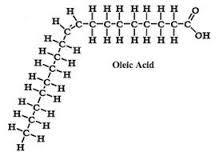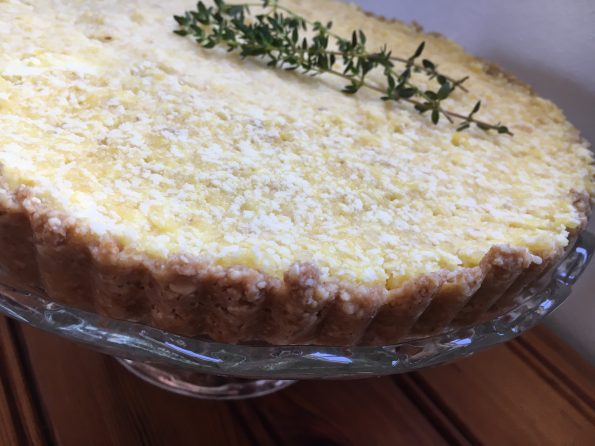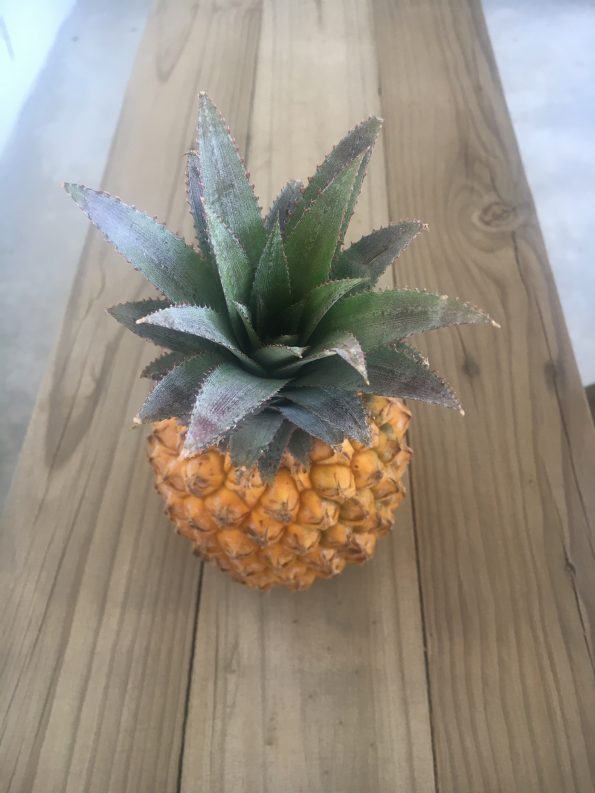This article has been inspired by a combination of factors : the shocked looks I get when telling people how many avo’s and liters of olive oil I consume in a month , putting an end to the belief that fats only equal expanded waistline and the super inspirational book : Fats that Heal Fats that Kill written by Udo Erasmus.
All the scientific references are based on the phenominal research done by Udo Erasmus – with a little input from my own background as an Analytical Chemist.
Just as all proteins are not equal , all fats are most definitly not equal. It is simply impossible to write an articles on the good and the bad of fats without adding a little bit of biology into the context. We will look at two main groups : Saturated Fatty Acids ( SaFAs ) and Unsaturated Fatty Acids ( UFAs). Below is a scetch of each one’s molecular structure.

( Butyric Acid – found in butter )
In short – the Saturated Fatty Acids have no double bonds and any of them that contain more than 12 Carbons are called long-chain SaFAs. They are insoluble in water , carry no electrical charge – making them stick together , with this resulting in the detrimental role they play in Cardiovascular disease by plague formation deposited onto cells , organs and arteries. Udo calls them sluggish molecules.
They are especially in abundance in beef , mutton , pork and dairy products.
Saturated Fatty Acids also decrease oxygen supply to our tissues , this makes our red blood cells stick together , less mobile – resulting in less oxygen being delivered to the cells.
A quick worth mention is that short-chain and medium-chain SaFAs with Carbon counts up to 12 such as Butyric acid ( 4 Carbons ) helps feed the friendly bacteria in our colons , Caprylic acid ( 8 Carbons ) inhibit growth of yeast and candida and Medium-chain SaFAs ( 6 – 12 Carbons ) are often used by athletes before work outs for a boost of energy.
A very well known medium-chain SaFAs is Coconut oil. It contains : Caprylic acid , Capric acid ( 10 Carbons ) and Lauric acid ( 12 Carbons ).All of these show incredible immune enhancing properties due to their natural anti-viral, anti-microbial , anti fungal properties. Laurel acid is know for it’s anti-viral properties. The recommended intake per day is 1 – 4 tablespoons. I find it an easy add on to my Chia Meal Breakfast ( Rawlicious brand ) or smoothy blend.
At this point I need to introduce a well known bad element namely : Refined Sugar.
Refined Sugar is almost always broken down into fats and mostly the unwanted SaFAs. Increased blood sugar also interferes with the release of Linoleic acid ( LA ) a crucial Essential Fatty Acid ( EFAs) I will mention a little later.

( Oleic acid – found in avocado’s )
Unsaturated Fatty Acids ( UFAs ) contain one or more double bond between their carbon atoms , as is noticeable in the sketch above of Oleic acid. Notice that it is the Hydrogen atom ( H ) – two at each double bond that has been given up. This simple shift in structure contributes to all the amazing health benefits we get from UFAs.
Each UFAs has it’s own unique quality and benefit to our wellbeing as listed below:
- Oleic acid ( 18 carbons , double bond between 9 and 10 ) – found in olives , avocado , cashews , peanuts , pistachio , macadamia and pecan nuts and keeps our arteries supple.
In his book : Eating for Beauty by my favorite mentor and general genius David (Avocado) Wolfe makes mention of high Oleic acid content in avocado , contributing to beautiful skin , being reason enough to have at least one of these a day.
He also makes special mention of the lessen known macadamia nut. In addition to the Oleic acid value , it is the richest source of the UFAs , Palmitoleic acid which acts as an antioxidant , has hydrating qualities , prevent cell membrane deterioration and has shown to be helpful in restoring damaged and burned skin.
David makes special mention of how the high calorie content of the macadamia nut is negligible due to the increase in fat metabolism caused by the EFA quality and content of the calorie source.
- Alpha-linolenic Acid ( LNA ) – Omega 3 and
- Linoleic Acid ( LA ) – Omega 6 – found in flax , hemp seed , linseeds, walnuts and dark leafy greens are called Essential Fatty Acids ( EFAs ).
The naming of omega-3 , omega-6 and omega-9 is simply derived from the positioning of the first carbon where a double bond is formed within the molecular structure.
EFAs attract oxygen and once again I have to make reference to Udo calling these beauties oxygen “magnets”. EFA’s are part of all our cell membranes.
EFAs has a slight negative charge , making them act in an opposite fashion to the “sticky” UFAs. They repel each other , making them super reactive and keeping the membranes fluid.
EFAs are also the precursors to prostaglandins. They are short lived , hormone like substances which regulate many cell functions.
This quality makes their presence in the structures responsible for: protein synthesis , secretion of substances out of cells , transport of substances in and out of the cells , release of energy out of cells , storage of products made by the nucleus of the cells and the chromosomes which carry the entire operational system plan of our body – vital to our optimal health.
LA and LNA shorten the recovery time for fatigued muscles due to their input during the conversion of lactic acid to water and carbon dioxide.
LA specifically help produce red blood cells ( hemoglobin ).
Linoleic ( LA ) acid is also the EFA with the highest daily requirement.
EFAs , particularly the omega-3 family are strong anti-oxidants , provide an immune boost , burn excess fat and play an important role in beautiful skin.
Hemp seeds are the only food that has the exact ration of omega-3 to omega-6 for optimal functioning. It also contains Gamma-linolenic Acid ( GLA ) part of the omega-6 family. Flax seeds provide a therapeutic quantity of omega-3.
- Eicosapentaenoic Acid ( EPA ) and
- Docasahexaenoic Acid ( DHA ) form part of the omega-3 EFAs family.
From the general qualities discussed above , we can understand why these EFAs are such key components to the most active organs in our body : brain , nerve relay stations ( synapses ) , sense organs ( retinas ) , adrenal glands and testes.
We are all familiar to the better known source of these two – being fish oils , especially mackerel , salmon , trout and sardines.
The challenge we are facing with our current water pollution situation is that the measures of radioactive compounds and mercury content are at toxic levels. To make the situation worst , both mercury and radioactive compounds are particularly attracted to fatty tissue – making the choice of getting our EPA and DHA from the ocean no longer a viable option.
Over the last decade more and more mention has been made of eating lower down on the food chain. It lessens the possibility of environmental toxicity captured in the tissue and also offers environmental relief on the massive environmental resource demand of producing large quantities of live stock.
The good news is that DHA and EPA can be manufactured by LNA , which as mentioned before is abundantly available in flax , hemp and also Chia seeds.
The one very important bit of information I have been holding back is .. when avo’s are not in season and your flax and hemp seed containers are empty – just ensure you always have a bottle of Udo’s oil in your pantry.
Udo Erasmus made it his life work to put together the perfect proportion of omega-3 , omega-6 , omega-9 our bodies want to perform at peak level.
After years of intense research on the topic he found the the ratio is :
Omega -3 , 6 , 9 = 2 : 1 : 1
He also found that the most damaging fats are found in margarines , shortenings and heated oils.
After reading all of the above – and once again realizing a lot of scientific names and terminology had to be used – I am hoping to see guilt free gulps of olive oil , bigger slices of avo , jars – abundant with macadamia nuts and hemp seeds as standard pantry items in your house. ( A bottle of Udo’s oil – purchased from your favorite Wellness Warehouse branch needs not even be repeated )
Also , if you would so wish , a copy of Dr Udo Erasmus’ book on your reading shelf. Even as it might not be a summer romance , I promise chapters of inspiring red wine drinking and how to keep your fur kids healthy – all just to much to squeeze into one article J







